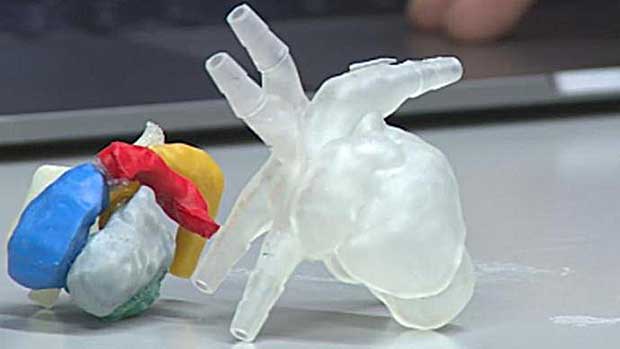
As one of the most difficult medical and surgical processes, the human heart transplant is a major challenge. The news, then, that a team of Wisconsin surgeons are working with a 3D printing firm to change that is entirely good news. These surgical experts are teaming up with engineering teams to get access to 3D-printed heart models. These models will be used to help a surgeon to prepare on a direct copy of their upcoming patient’s heart.
Aimed at helping to make pediatric heart surgery more likely to be a success, this is a positive move. The aim is to help make sure that there is a more specific accuracy with regards to the surgery outcome.
Speaking about the idea was Dr. Petros Anagnostopulous, the Chief Paediatric Cardiothoracic Surgeon at the American Family Children’s Hospital. A member of the University of Wisconsin Health faculty, too, he’s a major advocate of the idea. Speaking to WSAW.tv, he was very clear about the benefits this could bring.
Big Advantage
“The big advantage of the 3D printing is that you can recreate the heart. It’s the closest I’ve ever seen, some model — to the actual thing,” he said.
With the aim being to work on a printed version of the heart, the hope is that surgeons can vastly improve upon their accuracy for a specific patent. Already, one patient has benefited from this service – Joseph Oehlof, 6. Joseph was in need of a transplant after suffering from a rare heart condition.
Taken to the American Family Children’s Hospital for care, Dr. Anagnostopulous was able to carry out the treatment. He used a 3D model of the heart to help better prepare him for the challenging surgical scenario to come.
“There’s a lot of ability to see the relationship of the different parts of the heart as they are in real time. The 3D model prepares you better. The other thing it can do; it prepares your whole team better.” Dr. Anagnostopulous said.
Team Work
The developers of this unique technology are at the University of Wisconsin, too. Headed up by Alejandro Roldan Alzate, the Engineering Professor believes this is a major step forward for medical science. “When the surgeon can interact with a 3D printed heart before surgery, that helps a lot,” Alejandro said.
“What we have at UW as a benefit is that the medical school and the engineering school are just a bus ride away. All of the advances we have in engineering can be translated immediately in to the hospital.”
With the aim being to eventually take this into orthopaedic surgical practices, too, this could go very far. The hope is that, with the success of this practice, that other challenging parts of the human body will soon be fully accessible in preview form prior to the surgery taking place.
Sorry, the comment form is closed at this time.